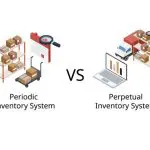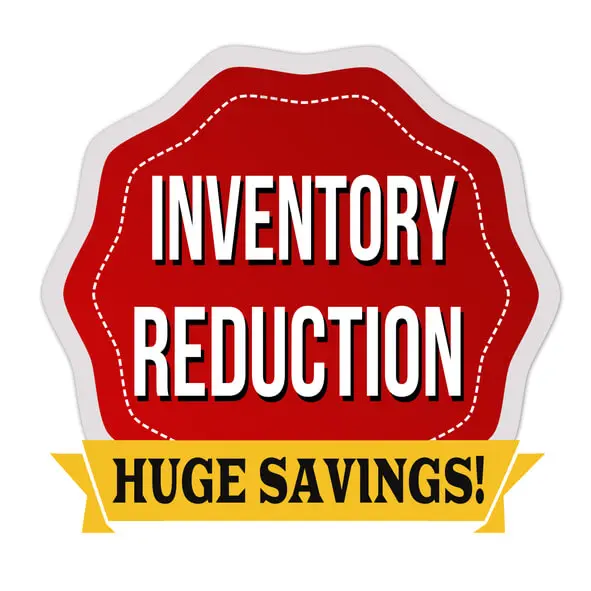In the complex world of inventory management and cost accounting, one method stands out for its balance of simplicity and effectiveness: the Weighted Average Cost (WAC) method. This comprehensive guide delves into the intricacies of WAC, exploring its definition, calculation, applications, and implications for businesses across various sectors. Inventory management is a critical aspect of business operations, directly impacting a company’s profitability and financial health. Among the various inventory valuation methods available, WAC has gained prominence due to its ability to provide a balanced view of inventory costs over time. By considering both the quantity and cost of items in inventory, WAC offers a nuanced approach to valuing stock and determining the cost of goods sold.
The importance of WAC extends beyond mere cost calculation. It plays a crucial role in financial reporting, tax compliance, and strategic decision-making. For businesses dealing with large volumes of similar items or operating in industries with fluctuating prices, WAC can provide a more stable and representative cost figure compared to other methods. As we navigate through this guide, we’ll explore the fundamental concepts underlying WAC, its practical applications, and its comparative advantages and disadvantages. Whether you’re a seasoned accountant, a business owner, or a student of finance, this article aims to provide you with a comprehensive understanding of WAC and its significance in modern business practices.
What is Weighted Average Cost (WAC)?
Weighted Average Cost, often abbreviated as WAC, is an inventory valuation method that determines the average cost of items in inventory by considering both the quantity and purchase price of goods. This method is particularly useful when dealing with large volumes of similar or identical items that are not easily distinguishable from each other. At its core, WAC is based on the principle that all units in inventory, regardless of when they were purchased, are valued at a uniform average cost. This average is calculated by dividing the total cost of goods available for sale by the total number of units available for sale. The key components of WAC consist of the cost of the beginning inventory, the cost of purchases made during the period, the quantity of units in the beginning inventory and the quantity of units purchased during the period.
The WAC method is particularly useful in scenarios where items in inventory are homogeneous and interchangeable, the cost of tracking individual unit costs is prohibitive, price fluctuations are frequent but not extreme or where a consistent valuation method is needed for financial reporting One of the primary advantages of WAC is its ability to smooth out price fluctuations over time. By averaging costs, it provides a more stable cost basis compared to methods like First-In-First-Out (FIFO) or Last-In-First-Out (LIFO), which can be more sensitive to short-term price changes. Moreover, WAC aligns closely with the physical flow of goods in many industries. In businesses where inventory items are stored together and used interchangeably, such as in oil refineries or grain elevators, WAC provides a logical and practical approach to inventory valuation.
From an accounting perspective, WAC simplifies the process of cost assignment. Instead of tracking the cost of each individual unit, which can be time-consuming and prone to errors, WAC allows for a streamlined approach where a single average cost can be applied to all units. However, it’s important to note that while WAC offers simplicity and consistency, it may not always reflect the most current market value of inventory, especially in times of rapidly changing prices. This is one of the trade-offs that businesses must consider when choosing an inventory valuation method. As we delve deeper into the mechanics and applications of WAC, we’ll explore how these characteristics play out in real-world scenarios and how businesses can leverage WAC to improve their inventory management and financial reporting processes.
Understanding Costs of Goods Available for Sale
The concept of “Cost of Goods Available for Sale” is fundamental to understanding and applying the Weighted Average Cost method. This figure represents the total value of all inventory that a company has available to sell during a specific period, including both the beginning inventory and any new purchases made during that period.
To calculate the Cost of Goods Available for Sale, we use the following formula:
Cost of Goods Available for Sale = Beginning Inventory + Purchases during the period
This calculation is crucial for several reasons. The first of these is inventory valuation. It provides a comprehensive view of the total cost invested in inventory, which is essential for accurate financial reporting. It also allows for cost flow assumption and forms the basis for determining the cost of goods sold and the ending inventory value, regardless of the inventory valuation method used. In the context of the Weighted Average Cost method, it serves as the numerator in the WAC calculation, with the total number of units available for sale as the denominator. Finally it allows for financial analysis. The analysis of purchasing patterns and inventory turnover can inform business decisions related to inventory management and cash flow.
The importance of accurately determining the Cost of Goods Available for Sale cannot be overstated. Any errors in this calculation will propagate through the entire inventory valuation process, potentially leading to misstated financial statements and poor business decisions. In the context of WAC, the Cost of Goods Available for Sale is particularly significant because it captures all costs associated with acquiring inventory, regardless of when those costs were incurred. This aligns with the WAC philosophy of treating all units in inventory as having the same average cost.
Consider a practical example:
A company starts the month with 100 units in inventory, valued at $10 each (total $1,000). During the month, they purchase:
- 150 units at $12 each (total $1,800)
- 200 units at $11 each (total $2,200)
The Cost of Goods Available for Sale would be calculated as follows:
Beginning Inventory: $1,000
- First Purchase: $1,800
- Second Purchase: $2,200 = Cost of Goods Available for Sale: $5,000
This $5,000 represents the total cost of all 450 units (100 + 150 + 200) available for sale during the period. Under the WAC method, this total cost would be divided by the total number of units to determine the average cost per unit.
It is crucial that all stakeholders understand and accurately calculate the Cost of Goods Available for Sale. Accountants need to prepare accurate financial statements and inventory valuations. Managers must be able to make informed decisions about pricing, purchasing, and inventory management, while investors and analysts have to be able to assess the company’s efficiency in managing inventory and its overall financial health
As we move forward in our exploration of WAC, keep in mind that the Cost of Goods Available for Sale forms the foundation upon which the entire WAC calculation is built. Its accuracy and proper interpretation are key to leveraging the full benefits of the WAC method in inventory management and financial reporting.
Calculating Weighted Average Cost
The process of calculating Weighted Average Cost (WAC) is a cornerstone of this inventory valuation method. While the concept is straightforward, its proper execution requires attention to detail and a clear understanding of the underlying principles. Let’s break down the calculation process step-by-step and explore the data and tools needed to perform this calculation effectively.
Step 1: Gather Necessary Data
Before beginning the WAC calculation, you need to collect the following information:
a) Beginning inventory quantity and value
b) Quantity and cost of each purchase made during the period
c) Total number of units sold during the period (if calculating ending inventory value)
Step 2: Calculate the Total Cost of Goods Available for Sale
As discussed in the previous section, sum up the cost of beginning inventory and all purchases made during the period.
Step 3: Calculate the Total Quantity of Goods Available for Sale
Add the quantity of beginning inventory to the quantity of all purchases made during the period.
Step 4: Calculate Weighted Average Cost per Unit
Divide the total cost of goods available for sale by the total quantity of goods available for sale:
WAC per unit = Total Cost of Goods Available for Sale / Total Quantity of Goods Available for Sale
Step 5: Apply WAC to Inventory Valuation
Use the calculated WAC per unit to value your ending inventory and cost of goods sold.
Let’s illustrate this with an example:
Beginning inventory: 100 units at $10 each (total $1,000) Purchases during the period:
- 150 units at $12 each (total $1,800)
- 200 units at $11 each (total $2,200)
Step 1: Data is provided above
Step 2: Total Cost of Goods Available for Sale = $1,000 + $1,800 + $2,200 = $5,000
Step 3: Total Quantity of Goods Available for Sale = 100 + 150 + 200 = 450 units
Step 4: WAC per unit = $5,000 / 450 units = $11.11 per unit
Step 5: If 300 units were sold during the period, the ending inventory would be valued at: 150 units * $11.11 = $1,666.50
And the cost of goods sold would be: 300 units * $11.11 = $3,333.30
A variety of tools are used for WAC Calculation.
Spreadsheet Software is an important example. Programs like Microsoft Excel or Google Sheets are excellent for WAC calculations. They allow for easy data input, automatic calculations, and the ability to create formulas that can be quickly updated as new data becomes available.
Accounting Software is also very useful and many modern accounting packages include built-in functionality for WAC calculations. These systems can often integrate directly with point-of-sale and inventory management systems for real-time cost updates. For larger businesses, Enterprise Resource Planning (ERP) Systems can automate the entire WAC process, from data collection to calculation and application in financial reports. Custom Software Solutions also come into play and some businesses may develop or commission custom software tailored to their specific inventory management needs, including WAC calculations.
When performing WAC calculations, it’s crucial to maintain accurate and up-to-date records of all inventory transactions, regularly reconcile calculated inventory values with physical counts, be consistent in the application of the WAC method across accounting periods, and consider the impact of returns, discounts, and other factors that might affect inventory cost. By following these steps and utilizing appropriate tools, businesses can ensure accurate and consistent application of the WAC method, leading to more reliable inventory valuations and financial reporting.
Weighted Average Cost (WAC) Method Formula
The Weighted Average Cost method relies on a specific formula that forms the core of its calculation. Understanding this formula in detail is crucial for anyone involved in inventory management or cost accounting. Let’s break down the WAC formula and examine each component:
WAC per unit = (Cost of Beginning Inventory + Cost of Purchases) / (Quantity of Beginning Inventory + Quantity of Purchases)
Or, expressed more concisely:
WAC = (CB + CP) / (QB + QP)
Where: WAC = Weighted Average Cost per unit CB = Cost of Beginning Inventory CP = Cost of Purchases QB = Quantity of Beginning Inventory QP = Quantity of Purchases
Let’s examine each variable in detail:
Cost of Beginning Inventory (CB) represents the total value of inventory at the start of the accounting period. It’s crucial to use the correct valuation from the end of the previous period to ensure consistency in reporting.
Cost of Purchases (CP) includes all costs associated with acquiring new inventory during the period. It’s important to include not just the purchase price, but also any additional costs such as shipping, handling, and import duties that are directly attributable to bringing the inventory to its present location and condition.
Quantity of Beginning Inventory (QB) is the number of units in inventory at the start of the period. It should match the ending quantity from the previous period.
Quantity of Purchases (QP) represents the total number of units purchased during the period. It’s crucial to maintain accurate records of all purchases to ensure the integrity of the WAC calculation.
The numerator (CB + CP) represents the total cost of goods available for sale, while the denominator (QB + QP) represents the total quantity of goods available for sale. By dividing the total cost by the total quantity, we arrive at an average cost per unit that takes into account both the quantity and cost of all inventory available during the period.
It’s worth noting that this formula can be applied in different contexts. In a periodic inventory system, this formula would be applied at the end of each accounting period to determine the average cost for all goods available for sale during that period while in a perpetual inventory system, this formula might be applied after each purchase to recalculate the average cost, which would then be used to value subsequent sales until the next purchase. In some industries, it might be more appropriate to apply this formula to specific batches or lots of inventory rather than to the entire inventory pool. The WAC formula, while straightforward, has several important implications. It smooths out price fluctuations over time, providing a more stable cost basis than methods like FIFO or LIFO. It doesn’t distinguish between older and newer inventory, which can be advantageous in industries where inventory is truly interchangeable, but potentially problematic in industries where the age or purchase date of inventory matters. It can be less administratively burdensome than methods that require tracking individual unit costs. Understanding the nuances of this formula is key to applying the WAC method effectively and interpreting its results accurately. As we move forward, we’ll see how this formula is applied in various real-world scenarios and how it compares to other inventory valuation methods.
Example of the WAC Method
To fully grasp the application of the Weighted Average Cost method, it’s valuable to work through detailed examples that illustrate its use in various scenarios. Let’s explore a series of examples that demonstrate the versatility and practicality of the WAC method.
Example 1: Basic WAC Calculation
Let’s start with a straightforward example:
MegaTech Electronics begins the month with 200 smartphones in inventory, valued at $300 each. During the month, they make the following purchases:
- Week 1: 300 smartphones at $310 each
- Week 3: 250 smartphones at $305 each
Calculate the WAC per unit and value the ending inventory if 600 smartphones were sold during the month.
Solution:
Step 1: Calculate the total cost and quantity of goods available for sale
Beginning Inventory: 200 * $300 = $60,000 First Purchase: 300 * $310 = $93,000 Second Purchase: 250 * $305 = $76,250
Total Cost = $60,000 + $93,000 + $76,250 = $229,250 Total Quantity = 200 + 300 + 250 = 750 units
Step 2: Calculate WAC per unit
WAC = $229,250 / 750 = $305.67 per unit
Step 3: Value ending inventory
Units remaining = 750 - 600 = 150 units Ending Inventory Value = 150 * $305.67 = $45,850.50
Example 2: WAC with Returns and Discounts
Now let’s consider a more complex scenario involving returns and discounts:
GreenGrocer starts the week with 500 kg of organic apples valued at $2 per kg. During the week:
- They purchase 700 kg at $2.20 per kg
- They receive a 5% discount on this purchase for bulk buying
- A customer returns 50 kg from a previous sale, originally sold at $2 per kg
Calculate the new WAC per kg.
Solution:
Step 1: Calculate the adjusted purchase cost
Purchase cost = 700 kg * $2.20 = $1,540 Discount = $1,540 * 5% = $77 Adjusted purchase cost = $1,540 - $77 = $1,463
Step 2: Calculate the total cost and quantity
Beginning Inventory: 500 kg * $2 = $1,000 Purchase: $1,463 Returns: 50 kg * $2 = $100
Total Cost = $1,000 + $1,463 + $100 = $2,563 Total Quantity = 500 + 700 + 50 = 1,250 kg
Step 3: Calculate the new WAC
WAC = $2,563 / 1,250 = $2.05 per kg
Example 3: WAC in a Perpetual Inventory System
Let’s examine how WAC works in a perpetual inventory system, where the average cost is recalculated after each transaction:
TechGadgets Inc. starts with 100 units of Product X at $50 each. The following transactions occur:
- Purchase 150 units at $55
- Sell 120 units
- Purchase 200 units at $53
- Sell 180 units
Calculate the ending inventory value using WAC.
Solution:
-
After first purchase: Total Cost = (100 * $50) + (150 * $55) = $13,250 Total Quantity = 100 + 150 = 250 New WAC = $13,250 / 250 = $53 per unit
-
After first sale: Cost of Goods Sold = 120 * $53 = $6,360 Remaining Inventory = 130 units at $53 each = $6,890
-
After second purchase: Total Cost = $6,890 + (200 * $53) = $17,490 Total Quantity = 130 + 200 = 330 New WAC = $17,490 / 330 = $53 per unit (rounded)
-
After second sale: Cost of Goods Sold = 180 * $53 = $9,540 Remaining Inventory = 150 units at $53 each = $7,950
Thus, the ending inventory value is $7,950.
These examples demonstrate the flexibility of the WAC method in handling various scenarios, including basic calculations, adjustments for returns and discounts, and application in a perpetual inventory system. Several key points are highlighted. WAC smooths out price fluctuations over time, providing a balanced view of inventory costs. The method can additionally easily incorporate complexities like returns and discounts. In a perpetual system, WAC is recalculated after each transaction, providing up-to-date cost information. WAC simplifies inventory valuation by assigning the same cost to all units, regardless of when they were purchased.
It’s important to note that while these examples use relatively simple numbers for clarity, in real-world applications, WAC calculations often involve larger quantities and more frequent transactions. In such cases, the use of automated systems becomes crucial to maintain accuracy and efficiency. Moreover, these examples illustrate how WAC can provide a reasonable approximation of inventory costs in various situations. However, they also hint at potential limitations. For instance, in rapidly changing markets, the average cost might not always reflect the most current market value of the inventory.
As we progress through this guide, we’ll explore how these calculations translate into practical applications in different business contexts and how they compare with other inventory valuation methods. Understanding these examples provides a solid foundation for grasping the more complex implications and strategic considerations of using the WAC method in inventory management.
The WAC Method under Periodic and Perpetual Inventory Systems
 The application of the Weighted Average Cost (WAC) method can vary significantly depending on whether a business uses a periodic or perpetual inventory system. Understanding how WAC functions under each system is crucial for accurate inventory valuation and cost of goods sold calculations. Let’s delve into the characteristics and implications of using WAC in both inventory systems.
The application of the Weighted Average Cost (WAC) method can vary significantly depending on whether a business uses a periodic or perpetual inventory system. Understanding how WAC functions under each system is crucial for accurate inventory valuation and cost of goods sold calculations. Let’s delve into the characteristics and implications of using WAC in both inventory systems.
Periodic Inventory System
In a periodic inventory system, the quantity and value of inventory are determined at specific intervals, typically at the end of an accounting period (e.g., monthly, quarterly, or annually). During this period, detailed records of inventory movements are not maintained. Instead, purchases are recorded in a purchases account, and the cost of goods sold is calculated at the end of the period.
When applying WAC in a periodic system, we must first define the Calculation Frequency, the weighted average cost is calculated only at the end of the accounting period and the Data Required to calculate WAC.
The data you need is:
- Beginning inventory quantity and value
- Total purchases during the period (quantity and value)
- Ending inventory quantity (determined by physical count)
The process for calculating WAC in a periodic inventory system is:
a) Calculate the total cost of goods available for sale (beginning inventory + purchases)
b) Calculate the total quantity of goods available for sale
c) Compute WAC by dividing total cost by total quantity d) Use this WAC to value ending inventory and calculate cost of goods sold
Cost of Goods Sold (COGS) Calculation: COGS = (Beginning Inventory + Purchases) - Ending Inventory Where Ending Inventory is valued at the calculated WAC
Advantages in Periodic System:
Simplifies record-keeping during the accounting period
- Reduces the frequency of WAC calculations
Challenges:
- Less detailed tracking of inventory movements
- Potential for discrepancies between calculated and actual inventory values
Example: A company starts the month with 100 units at $10 each. During the month, it purchases:
- 150 units at $12
- 200 units at $11 At the end of the month, a physical count shows 180 units remaining.
Calculation: Total Cost = (100 * $10) + (150 * $12) + (200 * $11) = $5,000 Total Quantity = 100 + 150 + 200 = 450 units WAC = $5,000 / 450 = $11.11 per unit
Ending Inventory Value = 180 * $11.11 = $1,999.80 COGS = $5,000 - $1,999.80 = $3,000.20
 Perpetual Inventory System
Perpetual Inventory System
In a perpetual inventory system, detailed records of inventory are maintained continuously. Each sale and purchase is immediately recorded, affecting the inventory account. This system provides real-time information about inventory levels and costs.
When applying WAC in a perpetual system,we must first define the Calculation Frequency, the weighted average cost is calculated only at the end of the accounting period and the Data Required to calculate WAC.
The data you need is:
- Current inventory quantity and value
- Each purchase (quantity and value)
- Each sale (quantity)
The process for calculating WAC in a periodic inventory system is:
a) After each purchase, recalculate WAC
b) Apply the most recent WAC to each sale until the next purchase
Cost of Goods Sold (COGS) Calculation: COGS is calculated in real-time for each sale using the most current WAC
Advantages of Perpetual System:
- Provides up-to-date inventory valuation
- Allows for more accurate interim financial reporting
- Facilitates better inventory control and decision-making
Challenges:
- Requires more sophisticated inventory tracking systems
- More computationally intensive due to frequent recalculations
Example: Starting inventory: 100 units at $10 each Transaction 1: Purchase 150 units at $12 Transaction 2: Sell 120 units Transaction 3: Purchase 200 units at $11 Transaction 4: Sell 180 units
Calculations:
-
After first purchase: WAC = [(100 * $10) + (150 * $12)] / (100 + 150) = $11.20 per unit
-
After first sale: COGS = 120 * $11.20 = $1,344 Remaining inventory: 130 units at $11.20 = $1,456
-
After second purchase: WAC = ($1,456 + 200 * $11) / (130 + 200) = $11.08 per unit
-
After second sale: COGS = 180 * $11.08 = $1,994.40 Ending inventory: 150 units at $11.08 = $1,662
Comparing the WAC Method under the Periodic and Perpetual Inventory Systems
When comparing the application of WAC under periodic and perpetual systems, several key differences emerge:
Timing of Calculations:
- Periodic: WAC is calculated once at the end of the period.
- Perpetual: WAC is recalculated after each purchase.
Accuracy of Interim Reports:
- Periodic: Less accurate for interim reporting as the WAC is not updated until period-end.
- Perpetual: Provides more accurate interim reporting due to continuous updates.
Computational Complexity:
- Periodic: Simpler, with fewer calculations required.
- Perpetual: More complex, requiring frequent recalculations.
Inventory Control:
- Periodic: Less effective for real-time inventory management.
- Perpetual: Allows for better inventory control and timely decision-making.
Cost Allocation:
- Periodic: Uses a single WAC for the entire period.
- Perpetual: Cost allocation more closely follows actual purchase patterns.
System Requirements:
- Periodic: This can be managed with simpler accounting systems.
- Perpetual: Typically requires more advanced inventory management software.
Suitability for Different Businesses:
- Periodic: Often used by smaller businesses or those with lower transaction volumes.
- Perpetual: Preferred by larger businesses or those with high transaction volumes and complex inventory needs.
The choice between periodic and perpetual systems when using WAC depends on various factors, including your business size and complexity, the transaction volume, the need for real-time inventory information, the available resources for inventory management, and industry-specific requirements
In today’s digital age, many businesses are moving towards perpetual systems due to advances in technology that make continuous tracking more feasible. However, the periodic system remains relevant for certain types of businesses or in specific situations where continuous tracking is impractical or unnecessary.
Ultimately, the decision should be based on a careful analysis of the business’s needs, capabilities, and the trade-offs between accuracy, timeliness, and resource requirements. Whichever system is chosen, consistent application is key to ensuring reliable financial reporting and effective inventory management.
Applications of Weighted Average Cost
The Weighted Average Cost (WAC) method finds applications across various business scenarios and industries. Its versatility and relative simplicity make it a popular choice for inventory valuation and cost accounting. Let’s explore some of the key applications of WAC in different contexts.
Inventory Management
In inventory management, WAC plays a crucial role in several areas. WAC provides a straightforward method for allocating costs to inventory items. This is particularly useful when dealing with large quantities of similar or identical items that are not easily distinguishable from each other. It also offers a balanced approach to valuing inventory, especially in industries where prices fluctuate frequently but not drastically. It provides a more stable valuation compared to methods like FIFO or LIFO, which can be more sensitive to recent price changes. Furthermore, WAC simplifies the process of calculating COGS, as all units are assumed to have the same average cost. This can streamline financial reporting and make it easier to analyze gross margins. By providing an average cost for inventory items, WAC can help in determining economical reorder points and quantities, balancing carrying costs with ordering costs. The average cost provided by WAC can serve as a baseline for pricing decisions, ensuring that prices cover costs and maintain desired profit margins.
There are many benefits to using WAC in inventory management such as simplicity in record-keeping and calculations, smoothing out of price fluctuations over time, and ease of implementation in various accounting systems. However, the challenges in using WAC for inventory management should also be understood. It may not reflect the most current market value of inventory in rapidly changing markets and can be less accurate for businesses with significant price fluctuations or seasonal variations. This tool may also not be suitable for industries where the age or specific cost of inventory items is critical.
Example: An electronics retailer uses WAC to manage its inventory of smartphones. By applying WAC, they can easily calculate the average cost of their smartphone inventory, despite receiving shipments at varying prices throughout the year. This average cost helps them set competitive retail prices while ensuring they maintain their target profit margins.
Other Applications
Beyond inventory management, WAC finds applications in various other business contexts:
Manufacturing:
- In process costing, WAC can be used to assign costs to work-in-progress and finished goods in industries with continuous production processes.
- It helps in determining the cost of raw materials used in production when materials are purchased at different prices over time.
Example: A chemical manufacturer uses WAC to value its raw material inventory and assign costs to its production process. This approach simplifies cost accounting in an industry where raw material prices can fluctuate frequently.
Retail:
- WAC is often used in retail environments where large volumes of similar items are sold, such as grocery stores or clothing retailers.
- It simplifies pricing and markdown decisions by providing a consistent cost basis.
Example: A large clothing retailer uses WAC to manage its inventory of t-shirts. Despite receiving shipments at different costs throughout the season, WAC allows them to maintain consistent pricing and easily calculate margins.
Commodity Trading:
- WAC can be useful in commodity trading to determine the average cost of holdings, especially when trades occur frequently at varying prices.
Example: A grain trading company uses WAC to value its inventory of wheat. This method helps smooth out the effects of price volatility in the commodity market.
Financial Services:
- In banking and investment, WAC can be applied to value securities portfolios, especially for fixed-income securities.
Example: An investment fund uses WAC to value its bond portfolio. This approach provides a balanced view of the portfolio’s cost basis, smoothing out the effects of purchases made at different interest rate environments.
Energy Sector:
- Oil and gas companies often use WAC to value their inventory of fuel or crude oil, where prices can be highly volatile.
Example: A petroleum refinery uses WAC to value its inventory of crude oil. This method helps in managing costs and pricing refined products in a market with frequent price fluctuations.
Hospitality:
- Hotels and restaurants may use WAC for valuing food and beverage inventory, where items are often purchased in bulk at varying prices.
Example: A large hotel chain uses WAC to value its wine inventory across multiple properties. This approach simplifies inventory management and cost allocation in their food and beverage operations.
Healthcare:
- Hospitals and pharmacies may use WAC for managing and valuing medical supplies and pharmaceuticals.
Example: A hospital uses WAC to manage its inventory of disposable medical supplies. This method helps in cost allocation and billing, providing a consistent basis for pricing medical procedures.
In each of these applications, WAC offers a balance between accuracy and simplicity. It provides a practical solution for businesses that need to manage large volumes of inventory or assets with varying costs over time. However, it’s important to note that the suitability of WAC depends on the specific circumstances of each business and industry. Factors such as price volatility, inventory turnover rates, and regulatory requirements should be considered when deciding whether to implement WAC.
As we continue to explore the implications of using WAC, we’ll compare it with other inventory valuation methods and discuss its advantages and disadvantages in more detail. This will provide a comprehensive understanding of when and how to best apply WAC in various business scenarios.
Comparing WAC to Other Common Inventory Valuation Methods
To fully appreciate the strengths and limitations of the Weighted Average Cost (WAC) method, it’s essential to compare it with other common inventory valuation methods. Each method has its own characteristics, advantages, and disadvantages, making them suitable for different business scenarios. Let’s examine how WAC stacks up against other popular methods:
First-In, First-Out (FIFO)
FIFO assumes that the oldest inventory items (first in) are sold first (first out). This method often closely matches the actual flow of goods in many businesses.
Comparison with WAC:
- Cost Assignment: FIFO assigns specific costs to inventory, while WAC uses an average cost.
- In inflationary markets: FIFO typically results in lower COGS and higher ending inventory values compared to WAC.
- Financial Reporting: FIFO often provides a more current valuation of ending inventory, closer to replacement cost.
- Complexity: FIFO can be more complex to implement, especially in high-volume environments, compared to WAC.
Example: A company buys 100 units at $10, then 100 units at $12. It sells 150 units.
- Under FIFO: COGS = (100 * $10) + (50 * $12) = $1,600
- Under WAC: WAC = ($1000 + $1200) / 200 = $11; COGS = 150 * $11 = $1,650
Last-In, First-Out (LIFO)
LIFO assumes that the newest inventory items (last in) are sold first (first out). This method is less common globally but is still used in some jurisdictions, particularly in the United States.
Comparison with WAC:
- Cost Assignment: LIFO uses the most recent costs, while WAC averages all costs.
- In inflationary markets: LIFO typically results in higher COGS and lower ending inventory values compared to WAC.
- Financial Reporting: LIFO can lead to outdated inventory valuations, especially if old inventory layers remain unsold.
- Tax Implications: In some jurisdictions, LIFO can provide tax advantages by reducing reported profits in inflationary periods.
Example: Using the same scenario as above:
- Under LIFO: COGS = (100 * $12) + (50 * $10) = $1,700
- Under WAC: COGS remains $1,650
Specific Identification
This method tracks the cost of each individual inventory item and assigns this specific cost when the item is sold. It’s often used for high-value, easily identifiable items.
Comparison with WAC:
- Accuracy: Specific Identification provides the most accurate cost assignment but can be impractical for large volumes of similar items.
- Complexity: It’s generally more complex and resource-intensive than WAC.
- Applicability: Suitable for unique or high-value items, while WAC is better for homogeneous goods.
Example: A car dealership uses Specific Identification for its inventory, tracking the exact cost of each vehicle. This wouldn’t be practical for a grocery store, where WAC would be more suitable.
Moving Average
Moving Average is similar to WAC but recalculates the average cost after each purchase in a perpetual inventory system.
Comparison with WAC:
- Timing: Moving Average updates more frequently than WAC in a periodic system but is similar to WAC in a perpetual system.
- Complexity: Moving Average can be more complex to implement manually but is often automated in modern inventory systems.
- Cost Flow Assumption: Both methods smooth out price fluctuations over time.
Example: In a perpetual system, WAC and Moving Average would yield identical results. The difference is more apparent in periodic systems where WAC is calculated less frequently.
Standard Costing
Standard Costing uses predetermined or estimated costs for valuation, with variances calculated to account for differences from actual costs.
Comparison with WAC:
- Cost Basis: Standard Costing uses estimated costs, while WAC uses actual historical costs.
- Variance Analysis: Standard Costing requires variance calculations and analysis, which WAC does not.
- Planning and Control: Standard Costing can be more useful for budgeting and performance evaluation.
Example: A manufacturing company might use Standard Costing to set expected costs for production, comparing these to actual costs (which could be calculated using WAC) to analyze efficiency.
There are a number of key considerations that should be taken into account when choosing between WAC and other methods, a few of which can be found in the list below:
Industry Norms play a role. Some industries have typical practices. For example, retail often uses FIFO or WAC, while manufacturing might use Standard Costing.
Inventory characteristics and the nature of the inventory (e.g., perishable vs. non-perishable, homogeneous vs. heterogeneous) can influence the choice.
Price Fluctuations are yet another key area. In markets with significant price volatility, FIFO or LIFO might provide more current cost information than WAC.
The Regulatory Environment also plays an important role. Tax regulations and accounting standards in different jurisdictions may favor or require certain methods.
The technological capabilities and sophistication of a company’s inventory management system can affect the feasibility of implementing more complex methods.
Management Information Needs is another factor. Different methods provide different insights into inventory costs and profitability.
Once a method is chosen, it’s important to apply it consistently for accurate financial reporting and analysis.
In conclusion, while WAC offers a balanced approach to inventory valuation, it’s crucial to consider the specific needs and circumstances of the business when selecting an inventory valuation method. WAC’s simplicity and ability to smooth out price fluctuations make it attractive in many scenarios, but it may not always provide the most accurate or relevant information for decision-making in all business contexts.
Advantages and Disadvantages of Weighted Average Cost
 The Weighted Average Cost (WAC) method, like any inventory valuation technique, comes with its own set of advantages and disadvantages. Understanding these pros and cons is crucial for businesses to make informed decisions about whether WAC is the most appropriate method for their specific needs.
The Weighted Average Cost (WAC) method, like any inventory valuation technique, comes with its own set of advantages and disadvantages. Understanding these pros and cons is crucial for businesses to make informed decisions about whether WAC is the most appropriate method for their specific needs.
Advantages
Simplicity and Ease of Implementation – One of the primary advantages of WAC is its simplicity. The calculation is straightforward and easy to understand, making it accessible to businesses of all sizes and levels of accounting sophistication.
Example: A small retail business with limited accounting resources can easily implement WAC to value its inventory without the need for complex tracking systems or detailed record-keeping of individual item costs.
Smoothing Effect on Price Fluctuations – WAC averages out the cost of inventory over time, which can help smooth out the effects of price fluctuations. This can be particularly beneficial in industries where prices are volatile but not extremely so.
Example: A coffee roaster using WAC can maintain more stable pricing for its products despite fluctuations in green coffee bean prices throughout the year.
Reduced Record-Keeping Requirements – Compared to methods like FIFO or Specific Identification, WAC requires less detailed record-keeping. There’s no need to track the cost of each individual unit of inventory.
Example: A hardware store carrying thousands of similar items (like nails or screws) can use WAC to simplify inventory valuation without tracking the cost of each individual shipment.
Applicability to Homogeneous Goods – WAC is particularly well-suited for businesses dealing with large quantities of identical or very similar items where individual cost tracking is impractical.
Example: A grain elevator using WAC can easily value its inventory of wheat without needing to separate and track different shipments received at varying prices.
Balanced Representation of Inventory Costs – WAC provides a middle-ground valuation that considers both older and more recent purchases, offering a balanced representation of inventory costs over time.
Example: A textile manufacturer using WAC to value its yarn inventory will have a cost basis that reflects both older, potentially cheaper purchases and more recent, possibly more expensive acquisitions.
Compatibility with Both Periodic and Perpetual Inventory Systems – WAC can be applied effectively in both periodic and perpetual inventory systems, offering flexibility to businesses with different operational needs.
Example: A mid-sized retailer can use WAC in its perpetual inventory system for real-time cost updates, while a smaller shop might apply WAC in a periodic system with less frequent calculations.
Reduced Impact of Errors – Because WAC uses an average, the impact of any single pricing error is diluted across the entire inventory, potentially reducing the overall effect of mistakes.
Example: If a purchasing clerk accidentally records a shipment of 1000 units at $12 instead of $10, the error’s impact on the overall inventory valuation will be less significant under WAC compared to a method like Specific Identification.
Disadvantages
Potential Inaccuracies During Price Fluctuations – In markets with rapid and significant price changes, WAC may not accurately reflect the current market value of inventory, potentially leading to under or overvaluation.
Example: A technology retailer using WAC might undervalue its inventory of rapidly depreciating electronic components, potentially leading to inflated profit margins on older stock.
Less Precise Cost Flow Assumption – WAC assumes that all inventory is mixed together and sold at an average cost, which may not accurately represent the actual flow of goods in some businesses.
Example: A car dealership using WAC would not accurately represent the cost of specific high-end models sold, as each vehicle typically has a unique cost basis.
Potential for Distorted Decision-Making – The averaging effect of WAC can sometimes obscure important cost trends, potentially leading to suboptimal pricing or purchasing decisions.
Example: A manufacturer using WAC might not immediately recognize the full impact of rising raw material costs, potentially delaying necessary price adjustments for finished goods.
Less Suitable for Unique or High-Value Items – For businesses dealing with unique, easily identifiable, or high-value items, WAC may not provide sufficiently detailed cost information.
Example: An art gallery would find WAC unsuitable for valuing its inventory, as each piece is unique and has its own specific cost and value.
Complexity in Certain Scenarios – While generally simple, WAC can become complex in situations involving returns, damaged goods, or mid-period inventory count adjustments.
Example: A clothing retailer using WAC might face challenges in accurately adjusting inventory values when processing numerous returns during a sale period.
Potential Tax Disadvantages – In some jurisdictions, WAC may not be the most tax-advantageous method, particularly compared to LIFO in inflationary environments.
Example: A U.S.-based manufacturer might pay higher taxes using WAC compared to LIFO during periods of rising costs, as LIFO would result in higher reported COGS and lower taxable income.
Less Reflective of Current Market Conditions – In rapidly changing markets, WAC may provide a cost basis that doesn’t closely reflect current replacement costs, potentially affecting pricing strategies.
Example: A commodity trader using WAC might base decisions on average costs that don’t accurately reflect current market prices, potentially leading to mispriced trades.
In conclusion, while WAC offers significant advantages in terms of simplicity and balance, it’s not without its drawbacks. The suitability of WAC depends largely on the nature of the business, the characteristics of its inventory, and the specific information needs of management. Businesses must carefully weigh these pros and cons against their particular circumstances and objectives when deciding whether to adopt the WAC method for inventory valuation.
Common Mistakes and How to Avoid Them
While the Weighted Average Cost (WAC) method is relatively straightforward, there are several common pitfalls that businesses should be aware of when implementing and using this inventory valuation technique. Understanding these potential errors and knowing how to avoid them is crucial for maintaining accurate financial records and making informed business decisions.
Incorrect Initial Setup
Businesses may fail to accurately establish the beginning inventory balance and cost when first implementing WAC. This can be avoided by conducting a thorough physical inventory count before implementation and carefully reviewing and verifying historical cost records. It may be wiser to consider engaging external auditors for the initial setup if dealing with large or complex inventories. As an example, a retailer switching to WAC must ensure that their starting inventory quantities and values are accurate. Any errors at this stage will propagate through future calculations.
Inconsistent Application
Businesses may apply WAC inconsistently across different product lines or time periods. This can be avoided by developing clear, written procedures for applying WAC, training all relevant staff on these procedures, and implementing regular internal audits to ensure consistent application. A manufacturing company, for example, should apply WAC consistently across all its raw materials inventory, not just select items, to maintain accuracy in overall inventory valuation.
Neglecting to Update WAC After Each Purchase
In a perpetual inventory system, businesses may fail to recalculate WAC after each new purchase. Means to avoid this is to Implement automated inventory management systems that recalculate WAC in real time. If using manual systems, a routine should be established for updating WAC immediately after each purchase. As an example, a small business owner manually managing inventory must remember to recalculate WAC each time new stock is received, not just at the end of the accounting period.
Miscalculating Total Costs
This may come about due to businesses omitting or incorrectly including certain costs when calculating the total cost of inventory. They can avoid this by clearly defining what costs should be included in inventory valuation (e.g., purchase price, shipping, handling) and by regularly reviewing and updating cost inclusion policies. Checklists should be used to ensure all relevant costs are captured. An example could be that a company might forget to include import duties in the cost of inventory, leading to an undervaluation of stock and potential tax implications.
Rounding Errors
Excessive rounding in WAC calculations can lead to material discrepancies over time. Businesses can avoid this by using accounting software that can handle precise decimal calculations. If calculating manually, businesses should maintain at least four decimal places in unit cost calculations. They should periodically reconcile calculated inventory values with physical counts to catch cumulative rounding errors. For example, a business dealing with high-volume, low-cost items might introduce significant errors if they round WAC to only two decimal places.
Failing to Account for Returns and Allowances
Businesses neglect to adjust WAC calculations for customer returns or purchase allowances. Methods to avoid this would be to establish clear procedures for handling returns and allowances in the WAC calculation. They should ensure that the inventory management system can properly process these transactions and regularly review return and allowance entries to ensure they’re correctly reflected in inventory valuations. A clothing retailer, for example, must adjust its WAC calculations when processing returns from a recent sale, ensuring that both the quantity and value of inventory are accurately updated.
Ignoring Obsolete or Damaged Inventory
Businesses may fail to adjust WAC for inventory items that have become obsolete or damaged. Steps to avoid this are to conduct regular inventory reviews to identify obsolete or damaged items, implement a clear policy for writing down or writing off such inventory, and ensure that these adjustments are reflected in WAC calculations. By way of example, an electronics store should regularly review its stock for outdated models and adjust the WAC accordingly to prevent overvaluation of inventory.
Mishandling Different Units of Measurement
Mistakes could occur when businesses Inconsistently apply units of measurement in WAC calculations. This can be avoided by standardizing units of measurement across all inventory items. If multiple units are necessary, ensure clear conversion policies are in place. It is advisable to use inventory management software that can handle multiple units of measurement. A chemical distributor, for example, must ensure that all liquid chemicals are consistently measured in liters (or another standard unit) when calculating WAC, even if some suppliers use gallons.
Neglecting to Reconcile with Physical Counts
Yet another error businesses can make is relying solely on calculated WAC values without periodic reconciliation with physical inventory counts. In order to avoid this they should schedule regular physical inventory counts and investigate and resolve any discrepancies between calculated and actual inventory levels.They should make use of cycle counting for continuous verification of inventory accuracy. As an example, a warehouse should conduct quarterly physical counts to ensure that its calculated inventory values using WAC align with actual stock levels.
Improper Handling of Consignment Inventory
Businesses may make the error of including consignment inventory in WAC calculations. They should avoid this by clearly distinguishing between owned inventory and consignment inventory in accounting records. Separate tracking systems should be established for consignment items. They should also regularly review inventory records to ensure consignment items are not included in WAC calculations. As an example, a bookstore must ensure that books on consignment from publishers are not included in its WAC calculations for owned inventory.
By being aware of these common mistakes and implementing the suggested preventive measures, businesses can ensure more accurate and reliable inventory valuations using the WAC method. Regular training, clear policies, and the use of appropriate technology can go a long way in minimizing errors and maintaining the integrity of financial reporting.
Conclusion
The Weighted Average Cost (WAC) method stands as a pivotal tool in the realm of inventory management and cost accounting. Throughout this comprehensive guide, we’ve explored the multifaceted nature of WAC, from its fundamental principles to its practical applications across various business scenarios.
Key takeaways from our exploration include:
WAC’s applicability has great versatility and spans across diverse industries, from retail and manufacturing to commodities and financial services, demonstrating its adaptability to various business models. By averaging costs over time, WAC provides a balanced approach and a middle ground between the extremes of FIFO and LIFO, offering a smoother representation of inventory costs. Its simplicity and efficiency are appealing. The relative ease of implementation and reduced record-keeping requirements make WAC an attractive option for many businesses, particularly those dealing with homogeneous goods in large quantities. It provides system compatibility as WAC’s flexibility in both periodic and perpetual inventory systems enhances its utility across different operational frameworks.
There are, however potential limitations. While advantageous in many scenarios, WAC may not always reflect the most current market values, especially in environments with rapid price fluctuations. There may also be implementation challenges. Common pitfalls in WAC implementation, such as inconsistent application or failure to account for returns and obsolescence, highlight the need for careful management and regular review of inventory valuation processes.
Furthermore, there are strategic implications. The choice to use WAC can have significant impacts on financial reporting, tax obligations, and business decision-making, underscoring the importance of aligning inventory valuation methods with overall business strategy. As businesses navigate the complexities of inventory management in an increasingly dynamic global marketplace, the importance of effective cost accounting cannot be overstated. WAC, with its balance of simplicity and effectiveness, offers a robust solution for many organizations. However, it’s crucial to recognize that no single inventory valuation method is universally superior. The optimal choice depends on a variety of factors including industry norms, regulatory requirements, technological capabilities, and specific business needs. Moving forward, businesses should regularly assess their inventory valuation methods to ensure alignment with current business objectives and market conditions. They should look into investing in robust inventory management systems that can accurately implement WAC and other valuation methods. It is crucial to provide ongoing training to staff to ensure consistent and accurate application of chosen inventory valuation techniques. Businesses should most importantly stay informed about evolving accounting standards and regulatory requirements that may impact inventory valuation practices.
In conclusion, while WAC offers a powerful tool for inventory valuation, its effectiveness ultimately depends on proper implementation and thoughtful application. By understanding both its strengths and limitations, businesses can leverage WAC to enhance their inventory management practices, improve financial reporting accuracy, and support informed decision-making. As with any accounting method, the key lies in aligning WAC with the unique characteristics and strategic goals of the business, ensuring that it serves as a valuable asset in the broader context of financial management and operational efficiency.






